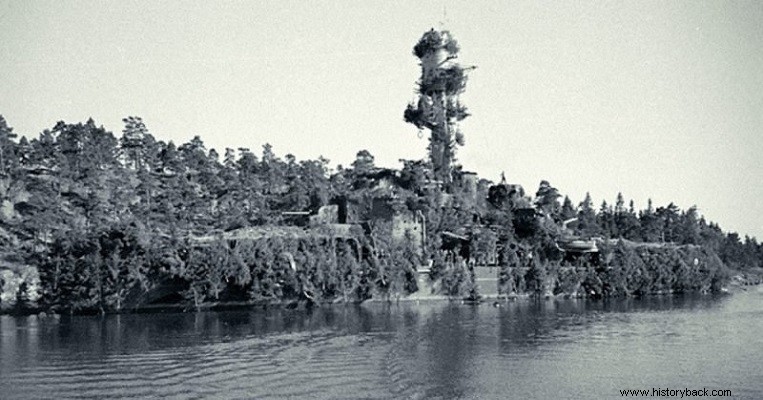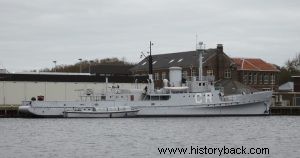
A small ship is extremely difficult to escape from the enemy when he is overwhelmingly superior in sea and air. This was also the case in World War II. On February 27, 1942, in the Java Sea, the Japanese crushed the allied naval forces.
Only four small Dutch vessels survived the disaster. But three of them sank in the following days. Only one escaped the small minesweeper HNLMS Abraham Crijnssen.
The Dutch vessel had entered service in 1937. It was 56m long. and displacement of 525 tons, crew of 45 men and was armed with one 76mm gun. two twin 20mm guns; bottom bombs and mining equipment. It developed a maximum speed of 15 knots.
It is easy to see that such a vessel was easy prey for Japanese warships and aircraft. The ship's only hope of survival was to... hide and then, if possible, sail to Australia.
The crew because of the desperate situation thought… crazy. So it was decided to turn the ship into an island! The idea was not as crazy as it sounds. There are 18,000 islands and islets in the area, some as small as the minefield.
So the boat approached a small island and the men began frantically cutting down trees from the island and uprooting and carrying plants to the boat. The biggest danger was Japanese aircraft so the whole boat had to be covered with plants.
It took a lot of effort but the ultimate variation of a ship in history was achieved. The boat became a small tropical jungle. Every metal part was painted appropriately and the ship became an island, or rather an extension of an island, as it docked next to a real one.
In the evenings, however, the ship sailed to Australia. Before dawn it anchored next to another island and remained motionless. After eight full days and nights the boat managed to reach Australia and was rescued.
It was the only Allied warship that had not ended up at the bottom in that vast sea area. The crazy plan had paid off.
Warrior and… monument
In Australia the vessel was repaired and fitted with an anti-submarine ASDIC system and entered the Australian Navy and continued to fight as an anti-submarine escort vessel. Its crew now consisted of Britons, Australians and Dutchmen.
There was even tension as the British wanted to hang the portrait of their king on the boat with the Dutch insisting that the portrait of their queen remain.
On 26 January 1943 the vessel was damaged by depth charges while chasing a Japanese submarine. The enemy ship was not sunk but her attack on the Allied convoy escorted by HNLMS Abraham Crijnssen was prevented.
On May 5the vessel was returned to the Dutch navy and continued to fight to the end taking part in minesweeping operations. After the war he participated in the operations against the Indonesian revolutionaries who were fighting for independence from the Netherlands.
The vessel returned to the Netherlands in 1951 and was decommissioned in 1960. Used as a floating training school for Dutch naval cadets. In the period 1962-72 it remained anchored in The Hague and was then transferred to Rotterdam.
In 1995 the ship was given to the Dutch Maritime Museum. It was rebuilt as it was during the Second World War and remains a memorial ship in Den Helder, the Netherlands.

The ship today.
